Social media may be dead, but that doesn’t necessarily mean that it’s not still evolving. If you experienced the birth of social media, which at the time of writing is soon to be 19 years old, then you likely had witnessed the shift that’s begun to take place since around 2016 — when TikTok entered the landscape and Instagram said goodbye to the chronological scroll.
While many didn’t realize it at the time, these two occurrences paved the path forward for brands and advertisers to assert dominance over Instagram feeds, while simultaneously leaving many users scrambling to navigate the newly formed landscape. Curiously, the universal shift social platforms have been making over the past 6 years – away from showing users content created by friends and family – has also brought forward the age of community. And while users have become inundated with content from brands and content creators as algorithms prioritize discovery, there has also come a paradigm shift in the strategies that those leveraging social for growth have to implement to succeed.
As we move forward in an age of consumption and discovery, our focus must move away from the prioritization of mechanisms that drive vanity metrics — as they are typically most easy to game and obfuscate. This is likely due to the fact that, as we learn more about how social media works and users learn more about how they’re being targeted, there is a universal shift towards metrics that are, for all intents and purposes, difficult to spoof and hold the most value.
It is primarily this reason that has driven strategies of the modern age of community to take a more vested interest in engagement over nearly every other metric. Ultimately, likes can be bought and traffic can be manipulated in any number of ways, but comments – while possible to be faked – are at least difficult to fake well. The same can be said for shares, stitches, duets, and other forms of true interaction as we move towards interaction above all else in our social strategies.
TL;DR:
- The shift away from vanity metrics
- The shift in algorithms
- The shift in transparency & authenticity
- The shift in pace
- The shift in content
- The shift in access & engagement
The shift away from vanity metrics
The hashtag #likeforlikes has 372M posts on Instagram as of today, which – if you couldn’t tell – is a hashtag that accounts used in order to trade likes with those who are also using the same hashtag. The way that it works is fairly self-explanatory, you post, you go through and like a bunch of posts, and others go through and do the same. The outcome? Your post gets more likes, their posts get more likes, and if you happen to catch the eye of someone who’s interested in your content you might get a new follower or some actual engagement.
Let’s compare metrics then and now:
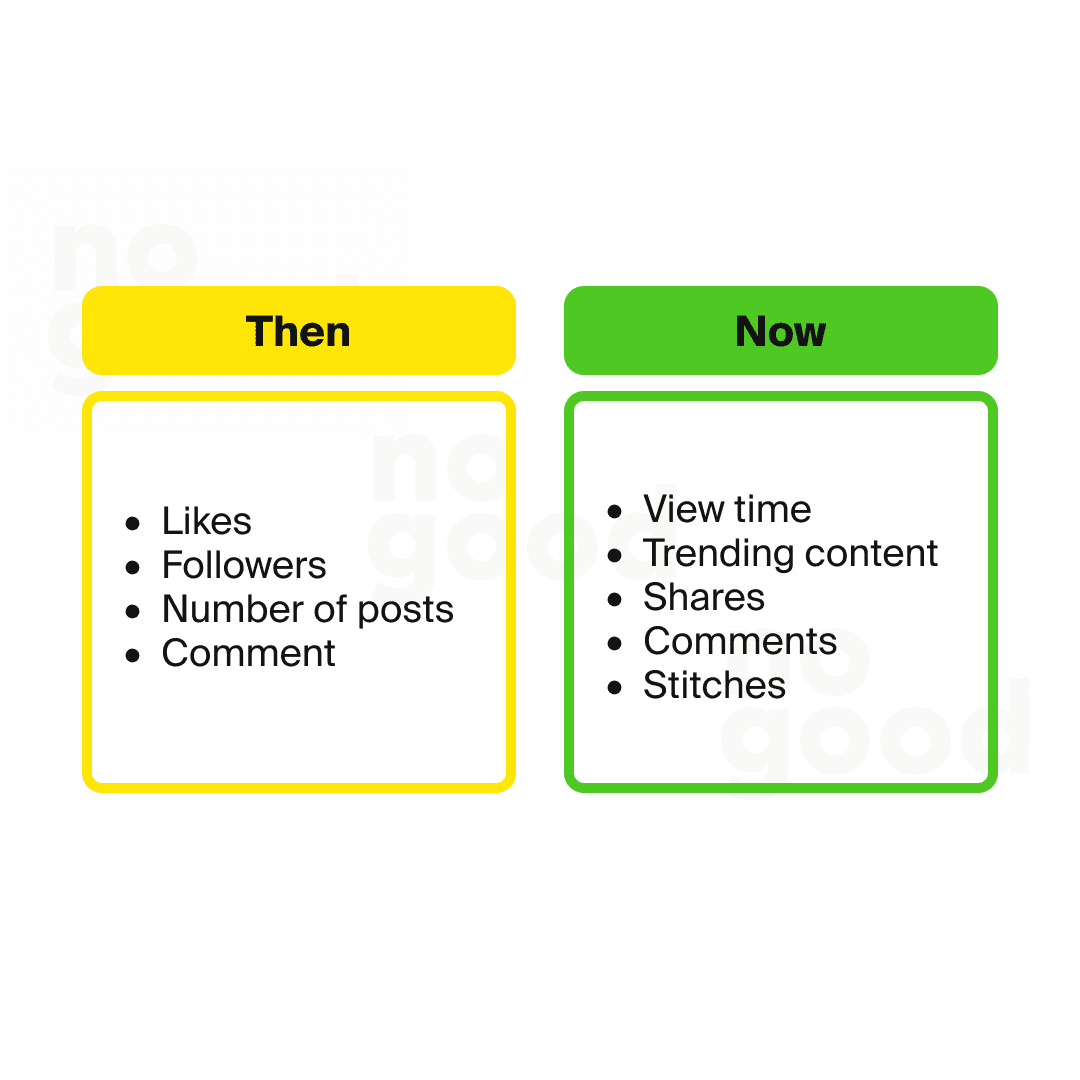
As we can see from the above, the shift now is significantly moving away from metrics that can be faked, either through bots or other trickery and towards metrics that have to be substantiated by human interaction.
The shift in algorithms
For one, the algorithms for modern social platforms are engineered significantly differently than they once were during the period of chronological scrolling, and even for periods shortly thereafter. It used to be that discovery, and the way to ‘game’ the algorithm, was accomplished by posting at specific times – because that was when your demographics were online – and then that would get pushed to a certain number of your followers, which would then be pushed out further depending on the number of likes it got within a certain period of time immediately after posting, and how much your account was also interacting with other accounts during that period of time — while also being entirely dependent on the angle of the sun.
If this sounds convoluted, it’s because it is. And while the modern algorithms for discovery are arguably more obfuscated and less understood, there is a far higher focus on content and audience than there is on trying to game the algorithm in order to get visibility — leading to less focus on vanity metrics as a byproduct.
This is likely because social algorithms are still convoluted, and it’s still unclear how they make the choices as to who sees your content, when, and why — the reality is that algorithms are working for creators now, not against them. As social media earned its place in the modern media landscape, those creating the algorithms realized that while brands are willing to pay for visibility and impressions, having the algorithms actively work against users to throttle their visibility was discouraging to both brands and users alike. And if you’re discouraging all users, then that’s no good for anyone since if there aren’t any users and there aren’t any advertisers, there isn’t any money.
Ultimately, the shift in the algorithm was made to benefit everyone. No more testing post times, no more gaming hashtags, just focusing on content; who doesn’t love that?
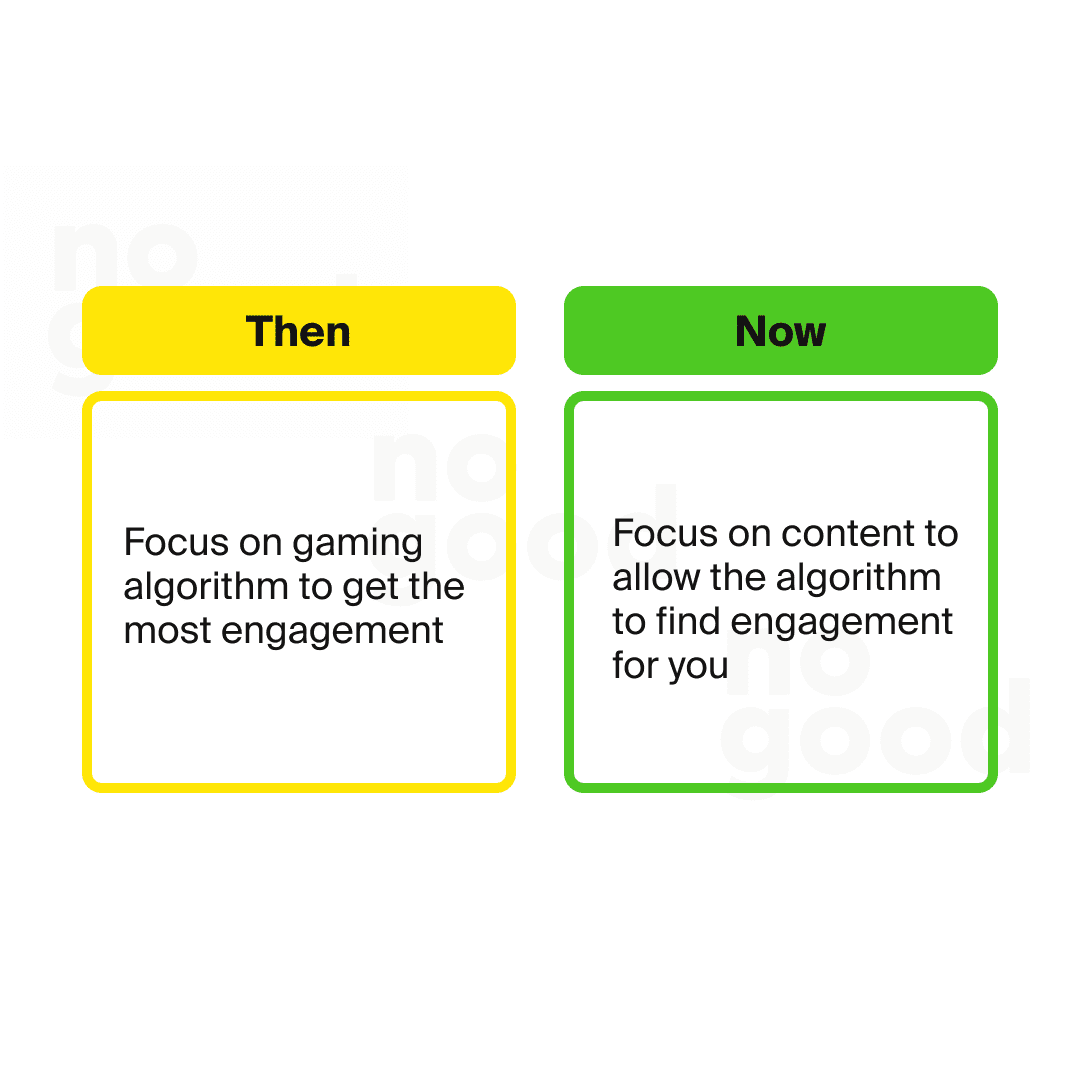
Since the shift took place, the role of social media managers & content creators became less about scheduling posts and optimizing hashtags, and more about understanding what their audiences were interested in, how they like their content to be delivered, and how they can best be engaged. As a result, both content & interactions have become more genuine due to the creative process shifting the focus away from making a line go up in order to satisfy the desire for vanity metrics, and move it towards catering directly to audiences in order to nurture community.
The shift in transparency & authenticity
The relationships between advertisers, audiences, and platforms were experiencing an immense amount of growing pains during the same period that TikTok entered the equation and began making the push towards community. While content, generally speaking, during the period prior to 2016 was very much editorialized, there were still a number of things that were undecided in regard to disclosure, transparency, and ethics, when it came to brands leveraging social.
In the years and months leading up to 2016 and the beginning of the paradigm shift that we are experiencing the culmination of today, there was very little in the way of industry standards in regard to how or when it was necessary to mention that content was paid for, or even where the line between advertising and advertorial was.
This may seem like something of a trivial matter today, as it is generally accepted today that product featured in content is likely being paid for in some way, and most consumers have a basic understanding of what affiliate marketing is, what brand partnerships are, and what to expect from the content creators that they follow. But at the time, this wasn’t the case, and the idea that influencers weren’t actually in love with the 3rd hyaluronic facial serum of the week was something of a foreign concept and difficult for many users to grasp onto.
Enter #ad and sponsored posts.
The introduction of brands & influencers having the opportunity to mark their posts as ‘sponsored’, and the advent of the use of #ad may have been the first signal that the influencer was about to meet an (arguably) untimely demise – RIP.
The outcome, however, was a marked improvement over the predecessor. As users failed to process that influencers were getting paid to do little more than look pretty and have an extravagant lifestyle and that 90% of their feeds were little more than the modern equivalent of product placement, there was a rapid exodus for users’ tolerance for “branded content” and a new demand for more transparency when money was exchanging hands.
Interestingly enough, the result we’re witnessing in the modern social landscape is leaning into the brand-creator dynamic and further blurring the lines between organic content and that which may, or may not, have outside financial influence involved in them.
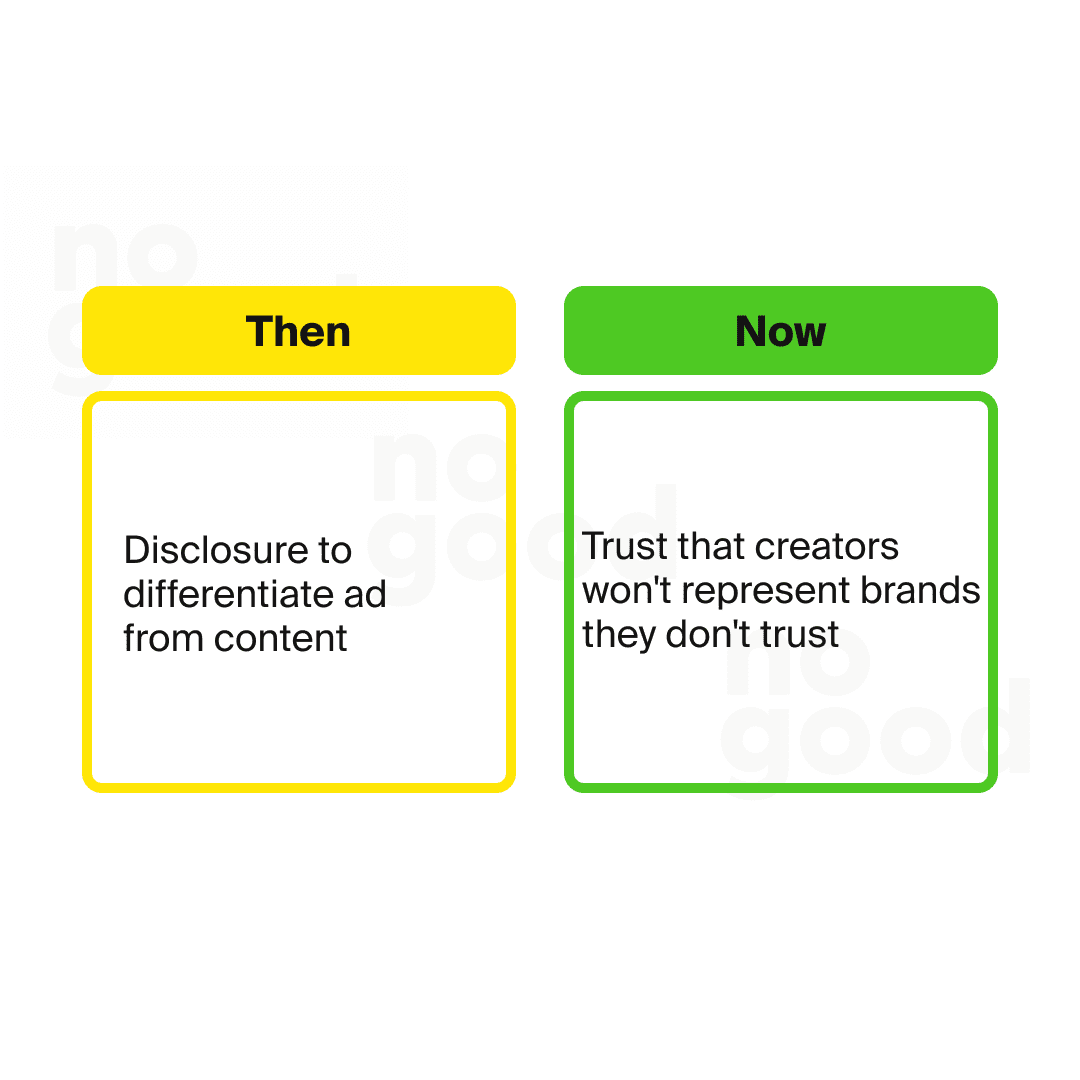
The difference, however, and the reasoning behind the success for many brands leveraging creators in their community strategies, is that brand and creator alike are focused now more on the substance of their business relationships, rather than the volume. Similar to the old adage of, “Give a person a fish, they’ll eat for a day. Teach a person to fish and they’ll never go hungry.” The modern approach to partnerships is focused on long-term, sustainable relationships with significant substance.
For creators, knowing that vanity metrics are no longer relevant, the focus of their community-building efforts is focused primarily on trust, and maintaining genuine relationships with audiences. The same mentality and approach are simultaneously being applied to the brands that creators align with, and creators that brands align with. Having individuals that communities trust has proven far more effective with modern audiences to drive LTV as compared to the previous iteration of having an influencer a day promoting product in hopes that one of the bots that follow them might accidentally buy some face serum.
Give a brand content, they’ll sell for a day. Teach a brand to partner with a creator, and they’ll sell for life.
The shift in pace
The term, content economy, gets thrown around quite a bit; and for good reason. The speed at which the modern content ecosystem moves is as rapid and kinetic as the crypto market. While this may be an intimidating prospect for many, it is one of the greatest benefits for modern social strategies as it is not only incredibly forgiving as compared to the previous ecosystem where brands and creators were often limited to once-a-day posting.
As mentioned, the current algorithm is shrouded in mystery, and no one really knows how it works, what makes it tick, or how to game it in any way – and that’s fine.
What is important to note, and the biggest benefit to the current demands of the media landscape is the ability to test and iterate more rapidly than ever — and do so without worrying about whether or not you posted at the right time of day.
With trends changing daily, and many adopting posting 2-3x per day as a best practice for their social strategies, with a great deal of content being easily repurposed across channels, the increase in cadence is often found as more insightful, higher performing, and often requiring a lower lift than previous strategic iterations.
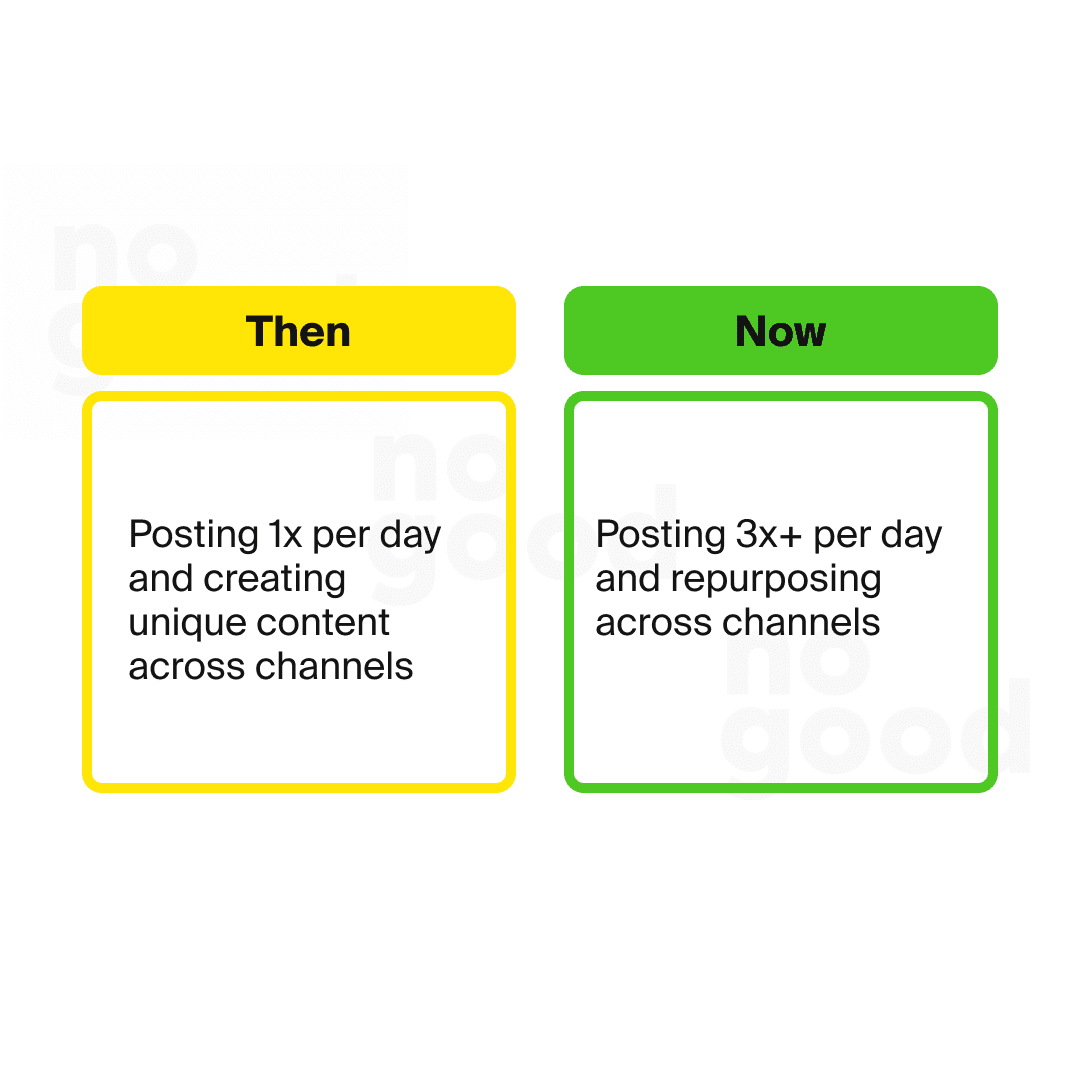
Taking into consideration Instagram and Meta alone and their plethora of different content types, post sizes, tools, filters, and all sorts of other variables, and the work to maintain a regular cadence becomes fairly overwhelming. Though it used to be that you could get away with posting a single static image a day and then taking a rest, it’s then became expected – if not necessary – to post a carousel of 5+ posts, a story to accompany the post, a reel, create a cover for that reel, and then, of course, repurpose that content in any way possible.
Despite there being the need to record 3x videos a day not, the lift has become significantly lower by way of not having to create more static assets as an extension of this content. It may not seem logical, but TikTok has actually made recording video a more efficient means of creating content than having to sit and design static images.
The shift in content
Memes as we know them today were born in the early stages of the internet, typically being relegated to message boards or other dark-social locations beyond the eye line of the average internet user. And while the traditional perception of what a meme is has entered the zeitgeist of popular culture, memes have infiltrated media far further than many acknowledge, and they have become a major – if not the most prominent – component of modern social strategies.
The beauty of memes, and why they have become such a major piece of the social media infrastructure, is that they only need to be created once and then can be recreated nearly infinitely. If this sounds familiar, it’s because it’s the foundation on which all of TikTok is built upon. Call it virality, call it trends, call it communal content, the reality is that each new video that goes viral and spawns thousands, if not millions, of copycats, is a meme.
The shift in strategies as we’ve witnessed today, however, is that content creation is less so today about creating new ideas – as it was in the early days of content – and more so about finding ways to partake in current content events in your own way — shaping the content to fit the voice & interests of your community. For every viral sound that emerges on TikTok (of which there are many) the creator or brand is challenged to interpret that content for their audience, incorporate interesting information into the trend, or otherwise shape the trend to appeal to their community.
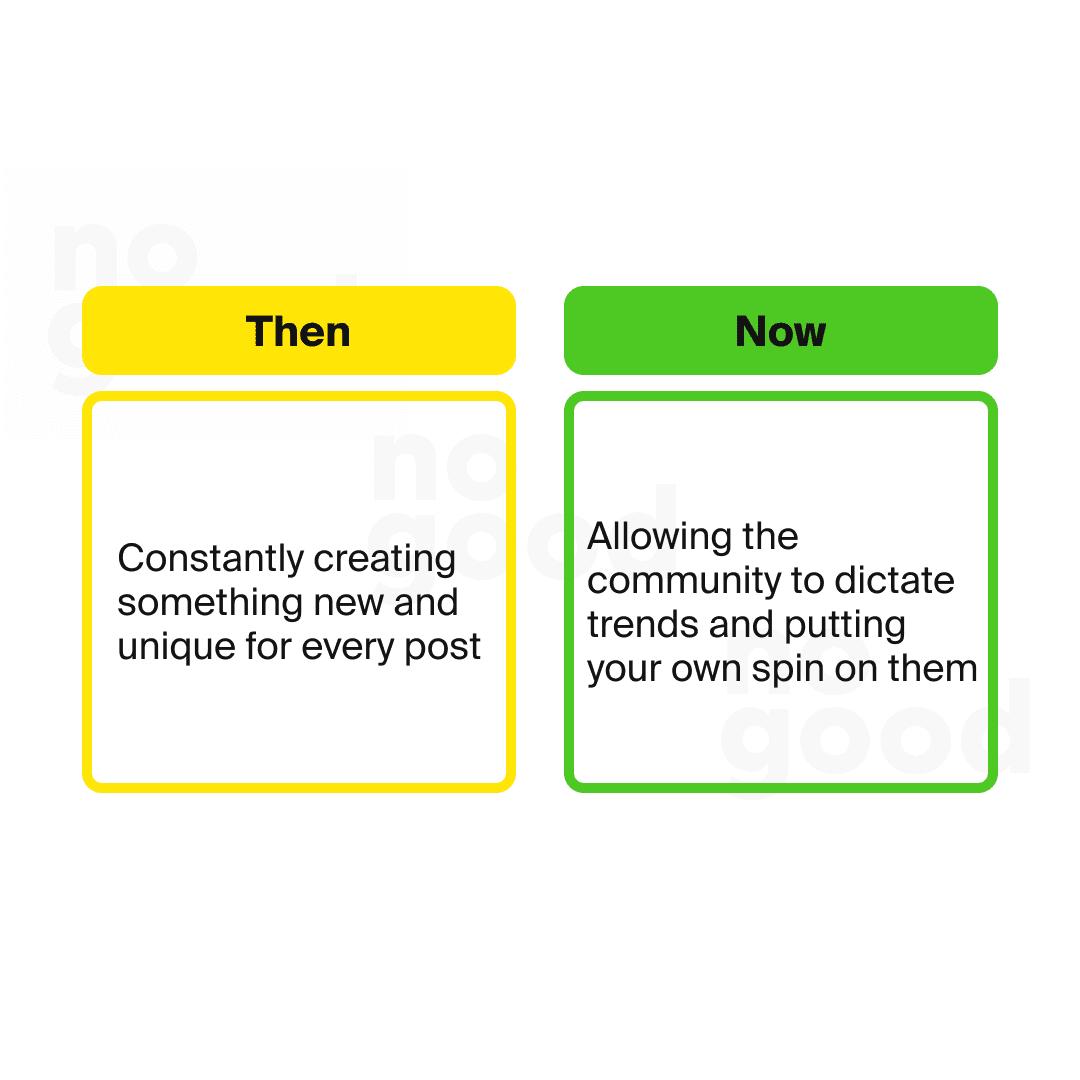
This takes an immense amount of pressure off of creative teams to be repeatedly generating new concepts or being tasked with ideation and allows them to rely on the community for these processes and focus on keeping up on current sounds. And while it may be perceived as allocating the effort to having to have a unique perspective or take in the sea of replicas of the original video, the reality is that the video created for your audience isn’t competing directly with the thousands of others since they themselves are being created specifically for their own audiences — once again aiding the sense of community and lessening the need for competition.
The shift in access and engagement
It’s true that most brands or creators will have individuals, if not entire teams, managing their social media — though this is not to say that the level of accessibility in today’s community-driven landscape is not unprecedented. In the same way that engagement is held in high regard as a metric to measure the efficacy of a brand or creator, their outward engagement is similarly a metric for the measurement of the quality of their account. Unlike in previous years, and previous iterations of social media – where things were very individual-centric – the current focus on community encourages a great deal of bidirectional communication.
Though this is most prominently displayed by creators and brands commenting directly on pieces of content that mention them, or otherwise engaging in pieces of media that are relevant to the brand – either directly or semantically – the practice goes deeper. It’s no longer acceptable, or accepted practice, to leave messages on read as it once was. Though it’s true that it’s not always possible to respond to every message, every comment, and every message a brand has, with social listening becoming more and more prevalent as a tool for community engagement, it’s significantly easier for brands to maintain awareness of where they are part of the conversation, and better guide the conversation when it is happening.
While there is some additional tact and emotional maturity necessary for navigating these new obligations of community-driven social strategies, in that there is a need to know when to engage in conversations, when not to, and more importantly — how.
It’s no longer enough to just control the narrative of a brand, on brand-controlled channels, where there is total control over what is being said. The conversation is now happening in real-time, on different platforms, with different individuals, other brands, and without filters. Navigating this as a brand has become an incredibly delicate task, though, with a focus on community and uplifting and supporting those within it, it can be incredibly fulfilling and, of course, engaging.
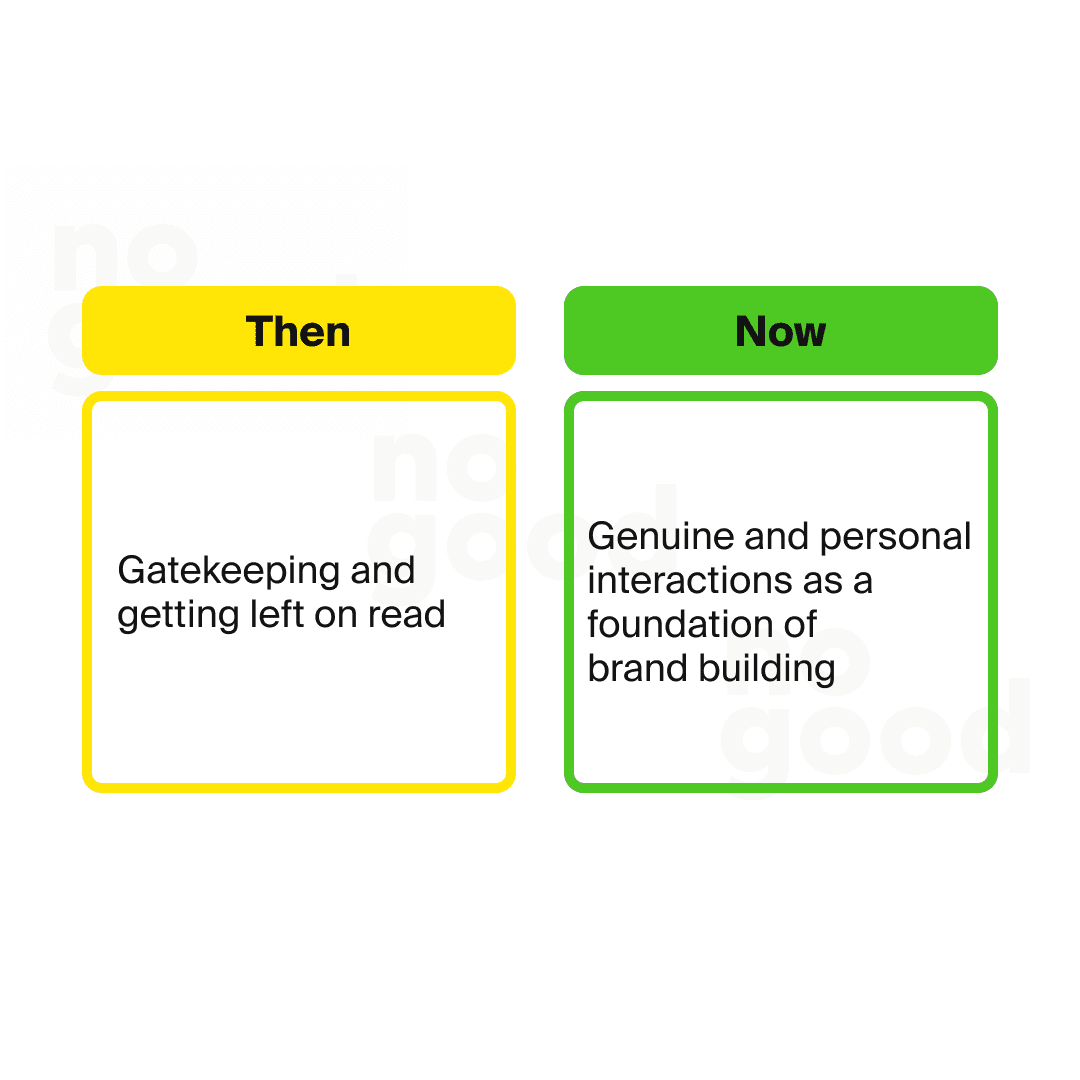
That said, this creates immense opportunities for brands as they sequester their communities to dark social. In creating and driving members of communities to private channels – whether on Slack, Facebook, Discord, or otherwise – brands and creators can create space of not only incomparable contact with audiences but incomparable insights — and vice versa for those within the community themselves. Though it would have been unheard of maybe even just a few years ago to have creators, CEOs, heads of community, and those who would otherwise not be reachable in traditional media operations interacting directly with those who have become members of their communities, it is not just a reality today — it’s the norm.
The continuing shift
While there are innumerous factors that contribute to the current state of community in social media, and by extension the strategies that dictate how both brands and creators build their platforms, the current trajectory is far from complete. As content becomes more rapid in pacing, accessibility becomes less intimidating, and platforms become more fluid, the concept of platforms will likely only further blur as connectivity becomes increasingly seamless.
For brands and creators, this means further blurring the lines between content and advertising, attention and conversion, and where the narratives start and end. As the conversation continues to defy structure, those at the helm of those interactions must not only be able to think quickly but do so empathetically and with the brand’s best interests in mind. While understanding the shift in strategies is the first step towards leveraging the modern take on social, we are always available if you ever need some guidance.





